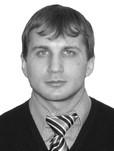14-15 year old boxers’ cardiovascular system functionality profiling in precompetitive training periods
Фотографии:
ˑ:
Postgraduate student A.T. Khasanov1
Dr. Biol., Professor E.Sh. Shayakhmetova1, 2
PhD, Professor L.M. Matveyeva1, 2
PhD, Associate Professor S.S. Matveyev1, 3
Associate Professor A.L. Lintvarev2
1Bashkir State Pedagogical University named after M. Akmullah, Ufa
2 South Ural State University (National Research University), Chelyabinsk
3Bashkir State University, Ufa
Objective of the study was to study the functional state of the cardiovascular system of boxers of 14-15 years in the preparatory period. The study involved 36 boxers of the I sports category and 24 teenagers without sports qualifications of the Republican boarding school No. 5 of a sports profile in Ufa. Surveys were conducted in a special training period. The functionality of the cardiovascular system of young boxers was evaluated by heart rate, blood pressure, adaptive capacity of the circulatory apparatus, endurance coefficient, double product. In the special training period, first-rate boxers noted an increase in heart rate (HR) compared to normal values. First-rate boxers have a higher heart rate of 19.5% compared with the same indicator for beginners. Blood pressure, indicators of adaptive capabilities of the circulatory apparatus, fitness of the cardiovascular system to fulfill the physical load of first-class boxers and novice boxers are in the range of normal values. Myocardial oxygen demand in young boxers of both groups in the special training period is significantly higher than standard indicators. The increase in this indicator is due to high heart rates. In turn, the reasons for an increase in heart rate may be an increase in the adrenal and thyroid function of young boxers of puberty, the extremeness of training situations, especially during free-style fights and sparring, which are accompanied by significant mental stress due to injury, as well as improper training.
Indicators of the functional state of the cardiovascular system can be regarded as an express assessment of the fitness of the body. From the point of view of the methodological organization of the training process, these indicators will tell the coaching staff about the correctness / incorrectness of building the micro- and macrocycle and initiate the search for means of non-pharmacological correction of negative conditions and deviations in the health status of athletes.
Keywords: functional state of cardiovascular system, adaptive potential, myocardial oxygen demand, working capacity.
References
- Bayevskiy R.M., Ivanov G.G. Variabelnost serdechnogo ritma: teoreticheskie aspekty i vozmozhnosti klinicheskogo primeneniya [Heart rate variability: theoretical aspects and clinical applications]. Ultrazvukovaya i funktsionalnaya diagnostika, 2001, no. 3, pp. 108–127.
- Begun P.I., Krivokhizhina O.V. Dopuskaemyie nagruzki na organyi i strukturyi chelovecheskogo organizma [Permissible loads on organs and structures of human body]. Trudy kafedry biomekhaniki universiteta im. P.F. Lesgafta. 2015. no. 9. pp. 10-19.
- Kozhevnikova O.A. Ratsionalny trenirovochny rezhim zanyatiy dlya yunykh bokserov raznogo urovnya fizicheskogo razvitiya i fizicheskoy podgotovlennosti [Adequate training mode for junior boxers of different levels of physical development and physical fitness]. V mire nauchnykh otkrytiy. 2017. v. 9. no. 1-2. pp. 19-24.
- Minullin A.Z. Psikhofiziologicheskie osobennosti adaptatsii yunykh bokserov k sorevnovatelnomu stressu [Psychophysiological characteristics of junior boxers' adaptation to competitive stress]. PhD diss.. Chelyabinsk, 2013. 143 p.
- Mikhnevich K.G. Moshchnost krovotoka [Blood flow power]. Meditsina neotlozhnykh sostoyaniy. Kiev, 2014. no. 7 (62). pp. 134-137.
- Shayakhmetova E.Sh., Rumyantseva E.R., Muftakhina R.M., Lintvarev A.L. Psihofiziologicheskie zakonomernosti adaptatsii bokserov vyisokoy kvalifikatsii k fizicheskim nagruzkam [Psychophysiological patterns of adaptation of elite boxers to physical activity]. SPb.: NPTs PSI, 2014. 176 p.
- Albouza Y., Chazaud P., Cremieux J., Wach M.The values of young boxers screened by schwartz,s model. STAPS. 2016. no.1. P. 97 – 112.


